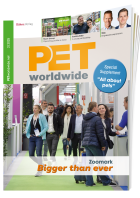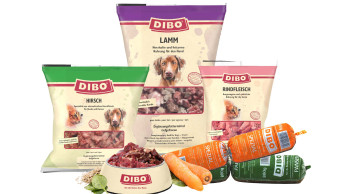As consumers become more interested in their pet's health, they're seeking out information to educate themselves about the best food for their animal, especially if their animal has health conditions that require special treatment. The overall growth of the therapeutic diet category for treatment of special conditions has been consistent with the ongoing trends of pet humanisation. This category continues to grow in Europe, especially in France. Euromonitor reports that emerging markets, such as Brazil, Mexico and Russia, also show excellent prospects for growth in this category.
One health condition that companion animals can sometimes suffer from is adverse food reactions, which can include symptoms ranging from pruritic dermatitis to food anaphylaxis, in acute circumstances where a true food allergy may be involved. Feeding diets that contain protein hydrolysates has become a strategy employed in elimination diets designed for the treatment of adverse food reactions. Protein hydrolysates and their molecular weight profile Research suggests that diets containing hydrolysed proteins have reduced immunological and clinical allergenicity. Proteins smaller than 10,000 Daltons are generally considered to be weakly immunogenic. In a 2006 study published by Loeffler, a commercial pet food diet based on a chicken hydrolysate was successfully used in diagnosing canine adverse food reaction. When protein hydrolysates are used in therapeutic diets targeted for treatment of adverse food reactions, it is important that the molecular weight (MW) profile meets critical limits as defined in the ingredient specification. Furthermore, lot-to-lot consistency in the protein hydrolysate ingredient used is needed. In a study completed by Kemin, a standard analytical method was used for measuring the molecular weight (MW) profiles of protein hydrolysates. The method, and especially the sample preparation, was optimised to maximisze the amount of protein and peptides that were solubilised so that the result is representative of the ingredient. Protein MW profiles were measured in a range of hydrolysates based on animal, marine, or vegetable proteins. Analyses of protein MW profiles were shown to be reproducible between lots of a commercially available chicken liver hydrolysate. Furthermore, it was shown that a very consistent MW profile was obtained for multiple lots of one hydrolysate product over time despite natural raw material variability and seasonality.
One health condition that companion animals can sometimes suffer from is adverse food reactions, which can include symptoms ranging from pruritic dermatitis to food anaphylaxis, in acute circumstances where a true food allergy may be involved. Feeding diets that contain protein hydrolysates has become a strategy employed in elimination diets designed for the treatment of adverse food reactions. Protein hydrolysates and their molecular weight profile Research suggests that diets containing hydrolysed proteins have reduced immunological and clinical allergenicity. Proteins smaller than 10,000 Daltons are generally considered to be weakly immunogenic. In a 2006 study published by Loeffler, a commercial pet food diet based on a chicken hydrolysate was successfully used in diagnosing canine adverse food reaction. When protein hydrolysates are used in therapeutic diets targeted for treatment of adverse food reactions, it is important that the molecular weight (MW) profile meets critical limits as defined in the ingredient specification. Furthermore, lot-to-lot consistency in the protein hydrolysate ingredient used is needed. In a study completed by Kemin, a standard analytical method was used for measuring the molecular weight (MW) profiles of protein hydrolysates. The method, and especially the sample preparation, was optimised to maximisze the amount of protein and peptides that were solubilised so that the result is representative of the ingredient. Protein MW profiles were measured in a range of hydrolysates based on animal, marine, or vegetable proteins. Analyses of protein MW profiles were shown to be reproducible between lots of a commercially available chicken liver hydrolysate. Furthermore, it was shown that a very consistent MW profile was obtained for multiple lots of one hydrolysate product over time despite natural raw material variability and seasonality.
The results MW…

 Menü
Menü








 2/2015
2/2015









 Newsletter
Newsletter